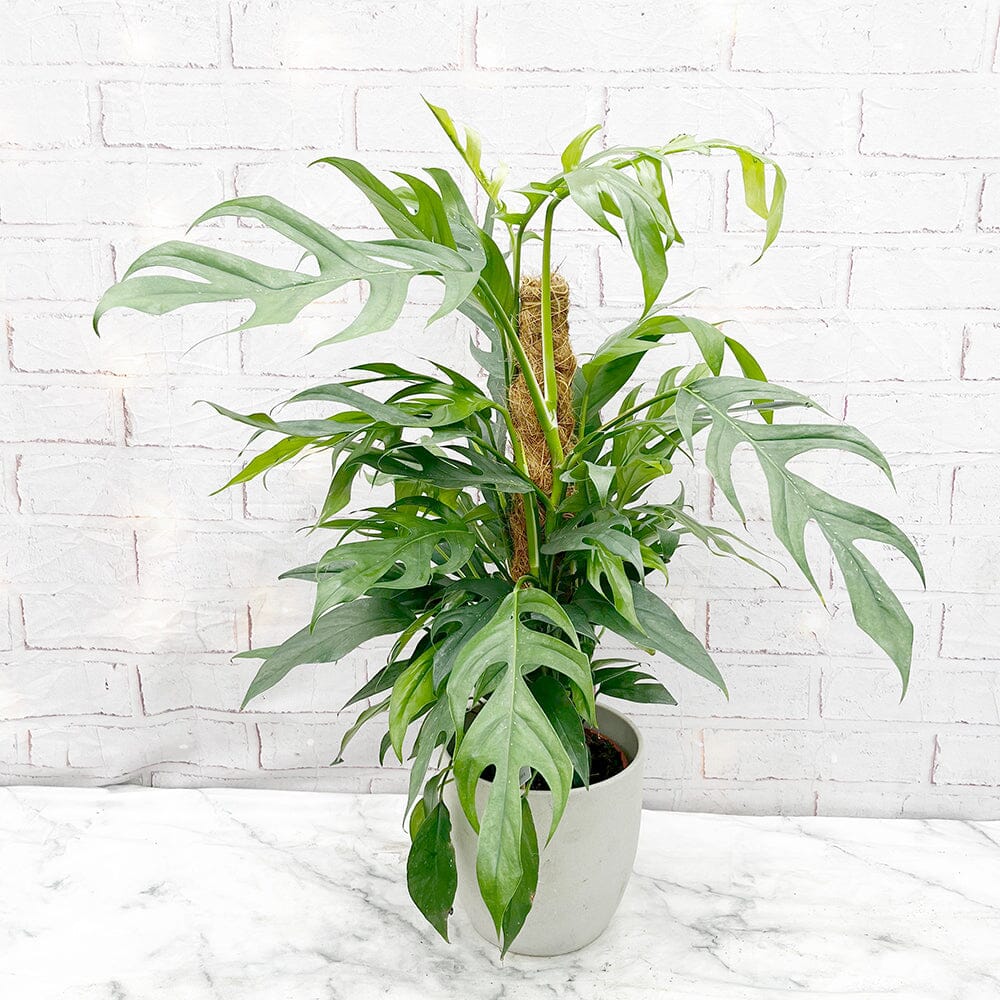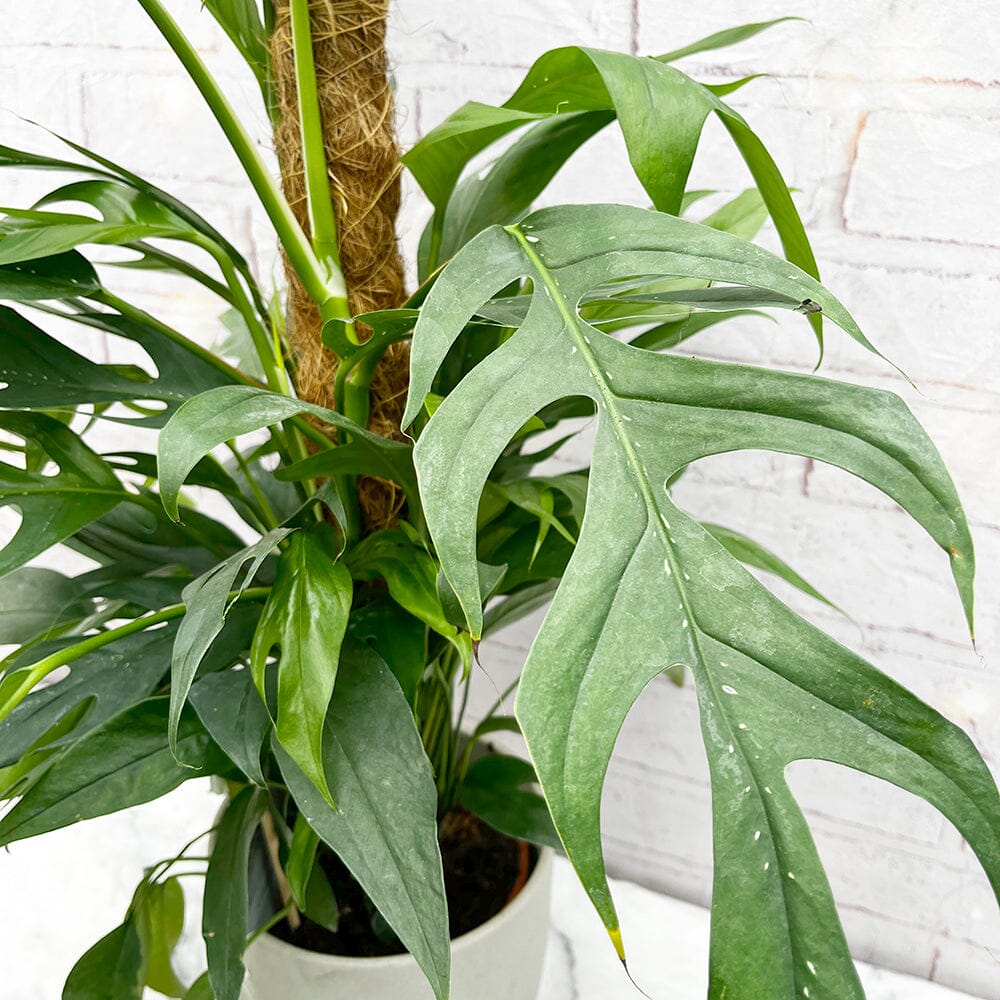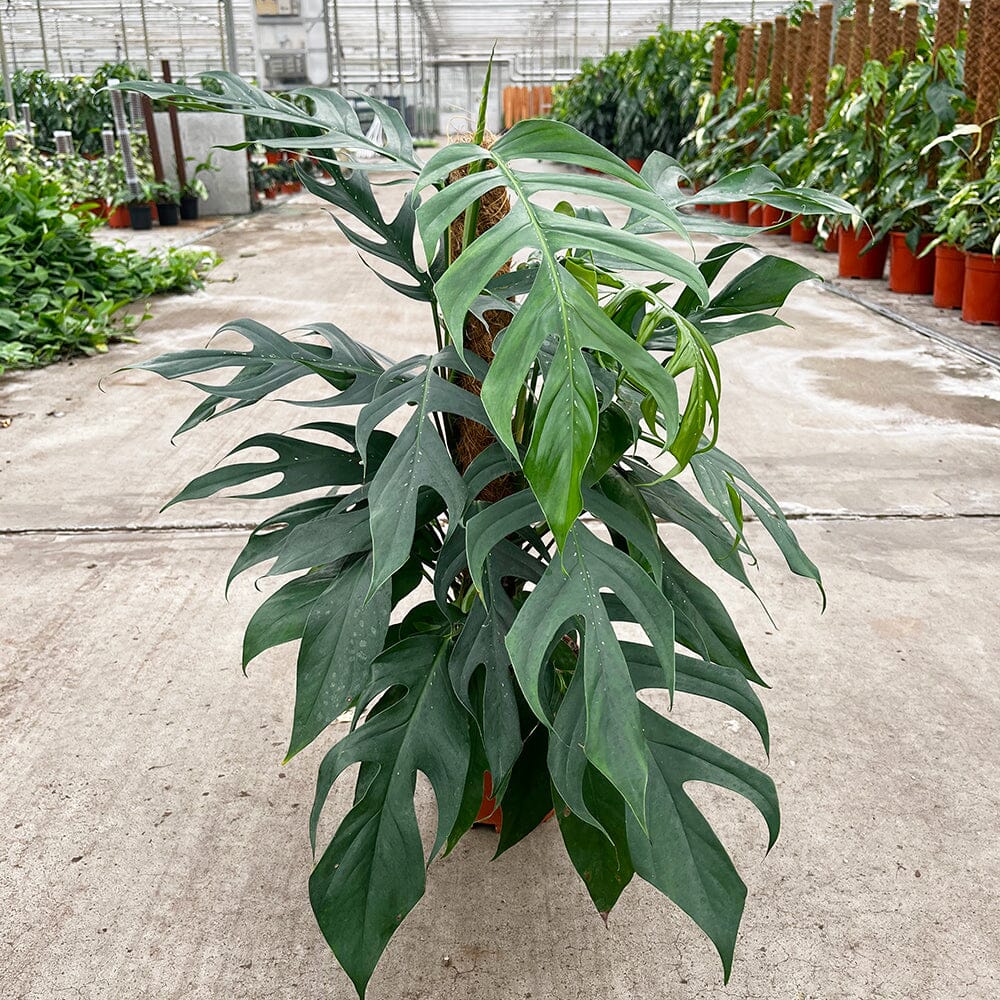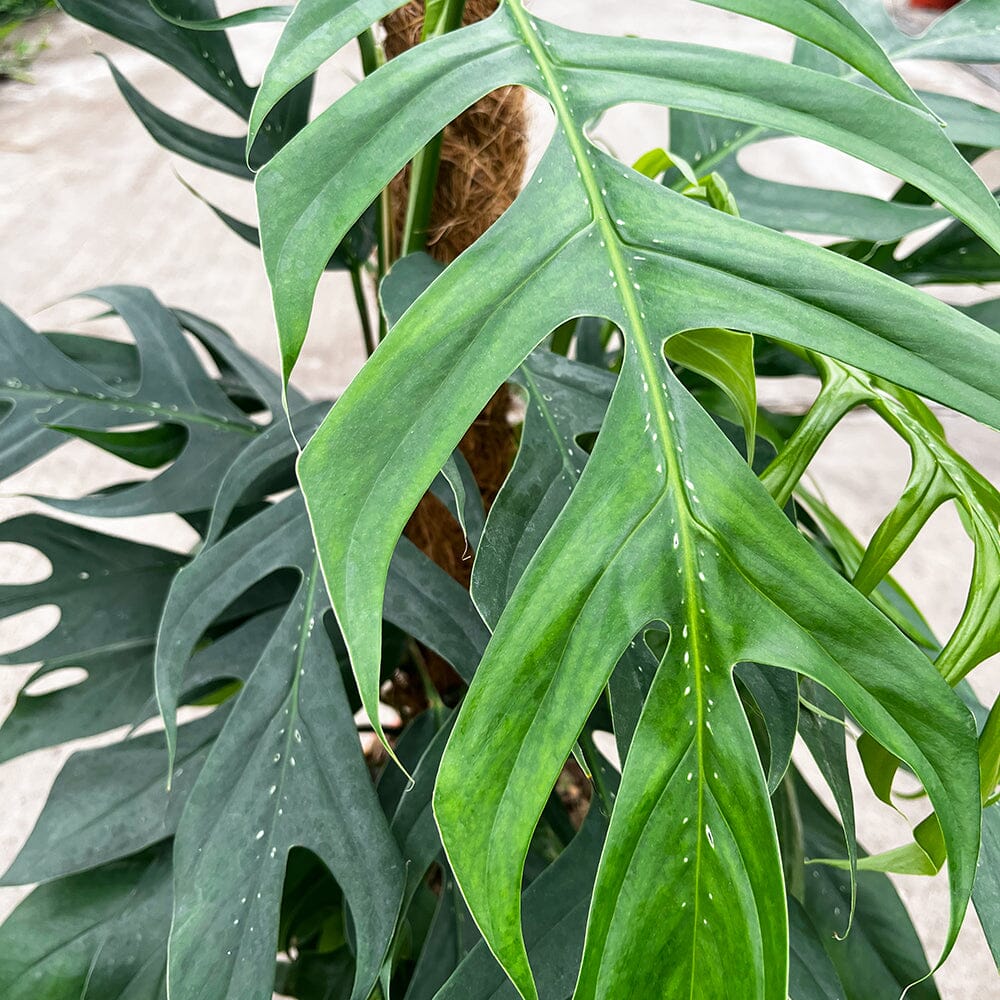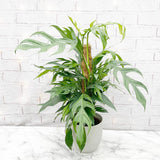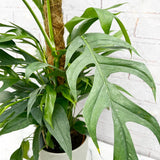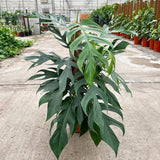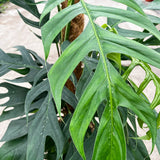New
55 - 65cm Mature Epipremnum Pinnatum Baltic Blue on Mosspole 17cm Pot House Plant
Epipremnum pinnatum, also known as Dragon Tail Plant, is a popular houseplant that's native to Southeast Asia and Australia. It is a climbing plant that in the wild can attach itself to trees and reach high into the canopy. This feature can be replicated at home using a moss pole for the plant to climb.
Description:
Epipremnum pinnatum has heart-shaped juvenile leaves, but as the plant matures and is given something to climb (like a moss pole), its leaves begin to change shape, looking more like a dragon's tail (hence the name). The leaves may also start developing fenestrations (natural holes) similar to those of a Monstera. Its mature leaves can be up to 1-2 feet long and are a vibrant, glossy green.
Care Guide:
-
Light: Epipremnum pinnatum prefers bright, indirect light but can tolerate lower light conditions. If the leaves are variegated, more light is needed to maintain the variegation.
-
Water: Water thoroughly when the top 1-2 inches of the soil are dry. Overwatering can lead to root rot.
-
Humidity: As a tropical plant, Epipremnum pinnatum enjoys higher humidity levels, though it is quite tolerant and can thrive in average indoor humidity. Increasing humidity can be beneficial, especially when coupled with a moss pole.
-
Temperature: Ideal temperatures are between 60 and 85°F (15 - 29°C). Sudden temperature swings should be avoided.
-
Soil: A well-draining soil mix is essential. A good indoor potting mix with added perlite or orchid bark for drainage is usually adequate.
-
Fertilizer: Feed your plant every 2-4 weeks during the growing season (spring to early fall) with a balanced, water-soluble fertilizer. Fertilizer can be reduced or skipped in the winter months.
-
Support: To encourage its natural climbing behavior, provide a moss pole for support. As the plant grows, you might need to secure the stems to the pole using ties or clips.
-
Pruning: Prune your Epipremnum pinnatum to maintain the desired size and shape. This can also encourage bushier growth.
-
Repotting: Epipremnum pinnatum should be repotted every 1-2 years or when it becomes root-bound. When repotting, you might consider upgrading the size of the moss pole if the plant has grown significantly.
-
Propagation: You can propagate Epipremnum pinnatum from stem cuttings. Ensure that each cutting has at least one node and place it in water or moist soil to root.
Caution: The Epipremnum pinnatum is toxic if ingested, so keep it out of reach from pets and small children.
As with all plants, the exact care needs can vary based on the conditions in your home. Always monitor your plant's health and adjust care routines as needed.
Check out our YouTube video to see exactly how we pack for safe delivery.
- Plants are supplied in plastic nursery pots unless stated in the product title.
- Plants are not for consumption unless stated as edible.
- Plant heights can fluctuate +/- 10%.
- Our plants are kept at our tropical nursery in Yorkshire where we maintain an average temperature of 18c.








